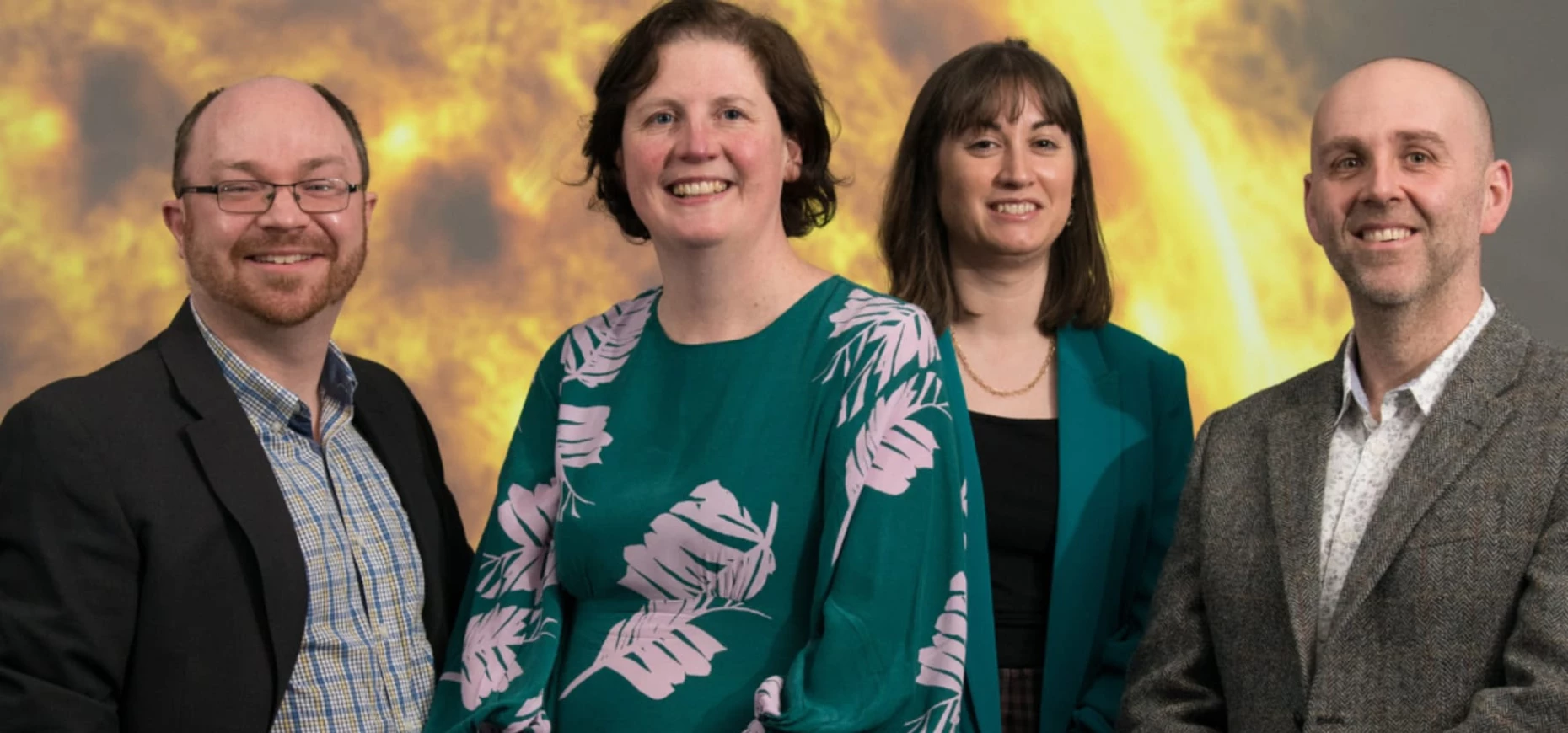
£1.29m funding boosts solar science at Northumbria University
Scientists from Northumbria University’s world-leading Solar and Space Physics research group have been awarded more than £1m to carry out research which will further our understanding of the Sun, and its impact on Earth.
Researchers have received a £1.29m grant from the UK government’s Science and Technology Facilities Council(STFC) to fund four research projects, each exploring a different element of the Sun’s activity and the Sun-Earth connection.
They include the movement of particles from solar flares, the speed and movement of solar winds, the processes that heat the Sun’s outer atmosphere to millions of degrees Celsius, and the dynamics of the radiation belts surrounding Earth.
Professor James McLaughlin heads up Northumbria University’s Solar and Space Physics research group and is lead investigator for one of the STFC-funded projects The fundamental physics of time-dependent magnetic reconnection with a specific interest in the applicability to Quasi-Periodic Pulsations.
Professor McLaughlin and colleagues will use high performance computing to run numerical simulations using existing data gathered from past solar flares to better understand the process taking place.
Speaking about his research, Professor McLaughlin said: “When magnetic lines become twisted, they can store energy like an elastic band. If the lines break and reconnect that energy is released. This is a very common occurrence in the solar corona and also happens in the atmospheres of other magnetically-active stars.
“One of the focuses of our research group is predicting space weather. To do that we need to understand its origins and discovering more about what triggers solar flares will allow us to do that.”
Space weather from the Sun can pose a significant risk to the technologies we rely on in daily life and those designing such infrastructures need to take space weather into account when designing robust systems.
These risks are recorded in the UK government’s national risk register with severe space weather recognised as a significant risk. The long term findings of these new Northumbria University projects will help the UK increase its preparedness and resilience to possible severe space weather events in the future.
Another of the projects funded through the STFC grant will explore the way in which high energy particles, such as electrons, are distributed when released from a solar flare.
A further two projects have also received funding through the STFC grant. Professor Jonathan Rae will lead the Using machine learning to determine and understand the underlying states of radiation belt electrons project.
Speaking about the significance of the STFC grant, professor James McLaughlin said: “We are delighted to be working with STFC on these transformative, ground-breaking research projects.”
By Mark Adair – Correspondent, Bdaily
- Add me on LinkedIn and Twitter to keep up to date
- And follow Bdaily on Facebook, Twitter and LinkedIn
- Submit press releases to editor@bdaily.co.uk for consideration.
Looking to promote your product/service to SME businesses in your region? Find out how Bdaily can help →
Enjoy the read? Get Bdaily delivered.
Sign up to receive our daily bulletin, sent to your inbox, for free.






 A legacy in stone and spirit
A legacy in stone and spirit
 Shaping the future: Your guide to planning reforms
Shaping the future: Your guide to planning reforms
 The future direction of expert witness services
The future direction of expert witness services
 Getting people into gear for a workplace return
Getting people into gear for a workplace return
 What to expect in the Spring Statement
What to expect in the Spring Statement
 Sunderland leading way in UK office supply market
Sunderland leading way in UK office supply market
 Key construction developments in 2025
Key construction developments in 2025
 Mediation must be part of planning process
Mediation must be part of planning process
 From apprentice to chief financial officer
From apprentice to chief financial officer
 Don't stifle growth with apprenticeship cuts
Don't stifle growth with apprenticeship cuts
 The start-up landscape: What lies ahead in 2025
The start-up landscape: What lies ahead in 2025
 JATCO adds welcome drive to automotive sector
JATCO adds welcome drive to automotive sector